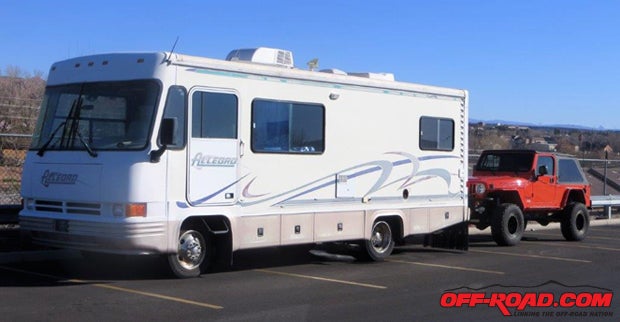
There are flatbed trailers ($2,500+), tow dollies ($1,000+), and tow bars ($125) for transporting your Jeep. Obviously, the prices are approximates, but close. Let’s look at the pros and cons of the three types of towing.
Trailers are considered the best way to transport your Jeep but they are also the most expensive.
Pros:
No wear and tear on your Jeep
Trailer brakes
Capable of backing up
Cons:
Price
Storage
Five additional tires to maintain
Tow dollies can be used if one of your axles cannot remain on the ground while the vehicle is being towed recreationally.
Pros:
No wear and tear on one axle
Possibility of trailer brakes
Cons:
Price
Storage
Incapable of backing up
Two additional tires to maintain
Not the safest option
Tow bars: In my opinion, flat towing with a properly mounted tow bar is almost as safe as trailering your rig and far superior to using a tow dolly.
Pros:
Price
Possibility of supplemental braking systems
Storage
Cons:
Incapable of backing up
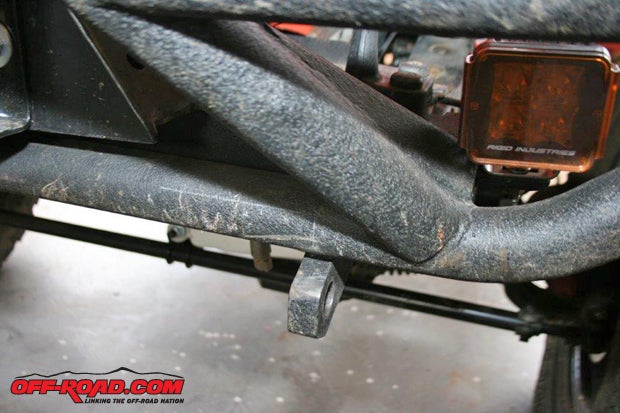
A Curt adjustable tow bar (Part # CHT-19745, $126) will allow you to tow up to 5,000 pounds. It is a black powder-coated steel tow bar with a 2-inch heavy-duty coupler, bolt-on bumper brackets, and mounting hardware. It is adjustable from 26 inches to 41 inches. Some vehicles—such as the subject Jeep—may require custom bracket fabrication. And many recent model Jeeps are factory-equipped with soft, collapsible bumpers to meet safety requirements. These Jeeps will need a base plate-type tow bar; however, all those Jeeps with aftermarket steel bumpers, such as this Jeep, will accept this tow bar.
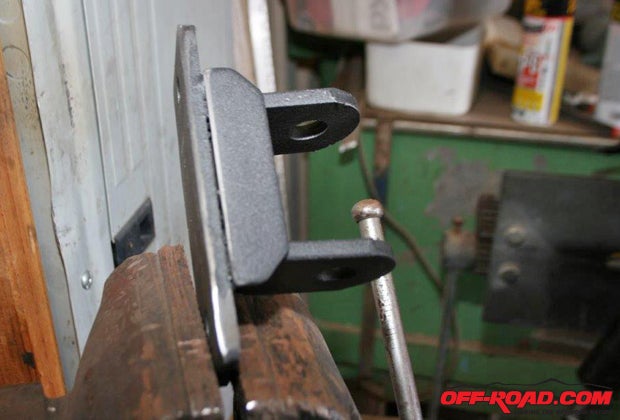
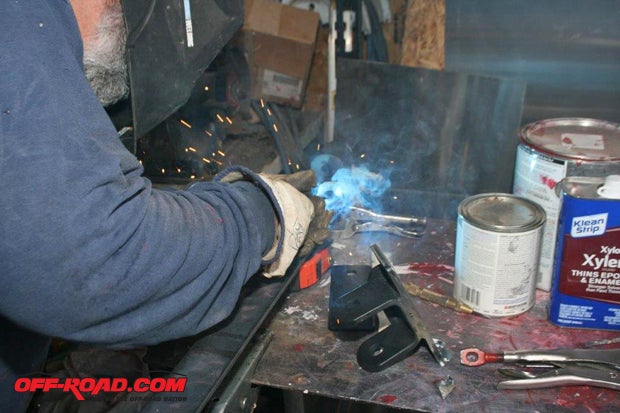
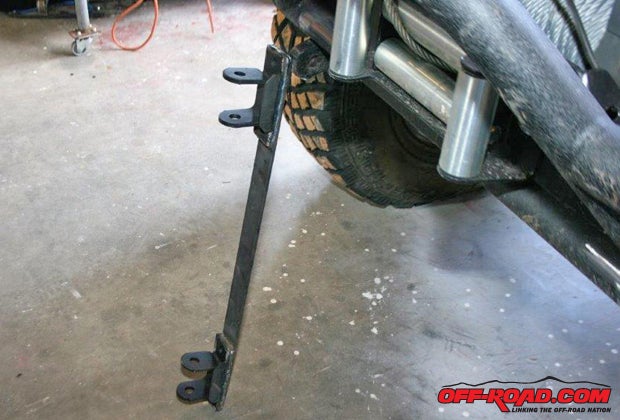
In addition to the tow bar you’ll need a pair of safety cables. I chose a set of Curt safety cables (Part # CHT-80176, $20) that are designed to give maximum security and peace of mind when towing. These cables are self-coiling to keep from dragging when towing. Each cable is coated for safety and to help prevent rusting and fraying. They are 42 inches in length with spring-loaded steel safety latches that keep the hooks in place. I use the D-rings in the Rugged Ridge tubular bumper on the Jeep side and the receiver’s attachment points on the motorhome side.
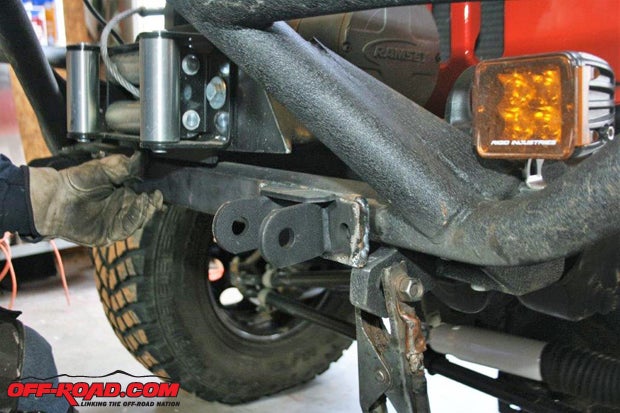
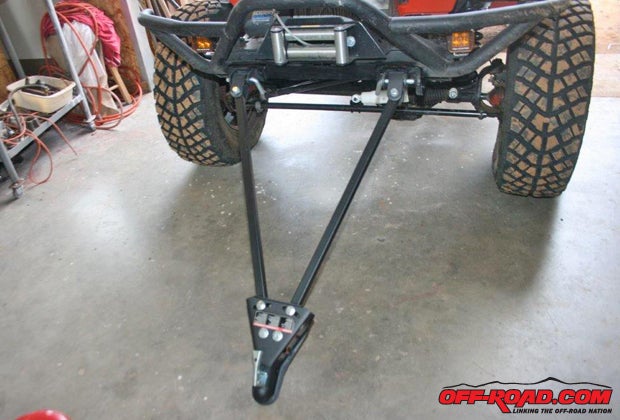
When attaching the safety cables cross the cables beneath the tow bar. This does two things; they tend to support the tow bar should it become disconnected from the ball. Secondly, it will control the Jeep better, keeping it behind the motorhome if the tow bar becomes disconnected. Without crossing the safety cables—attaching them in parallel—the Jeep will wander all over the place with a disconnected tow bar, plus the bar could very likely come into contact with the pavement at speed, which could flip the Jeep.
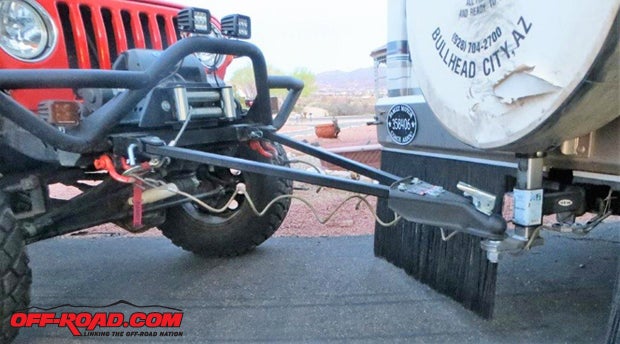
One last thing is needed for flat towing – a set of taillights. You can use the Jeep’s own taillights for towing behind a pickup or motorhome if you know how to wire the trailer plugs and use diodes. Diodes are one-way circuit protectors that allow electrical power to flow in only one direction. In order to use brake lights as turn signals as well as brake lights they must be separated by either diodes or a switch that breaks the circuit. If you use a switch, you could forget to reset it when driving the Jeep so diodes are safer, but require more electrical knowledge. Or….
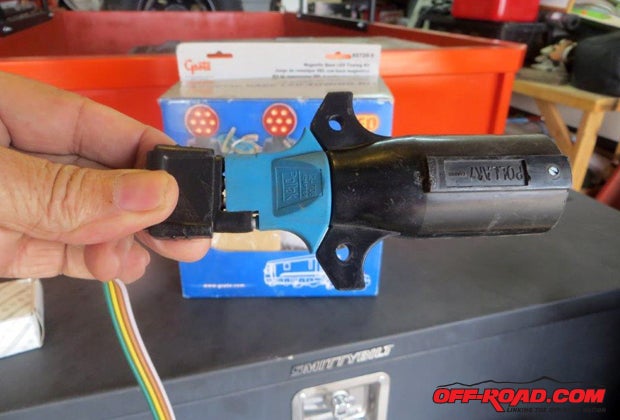
You can use a set of magnetic taillights, which is what I did. A Grote Industries LED towing light kit (PN GTE-65720-5, $70) is all inclusive with two magnetic lights, cable, and four-way connector. Simply plug them in—you’ll need an adapter to match any trailer electrical outlet other than a flat-four—route the cable to the rear of your Jeep, and allow the lights to lock themselves to the rear bumper with their magnetic stands, and you’re ready to roll.
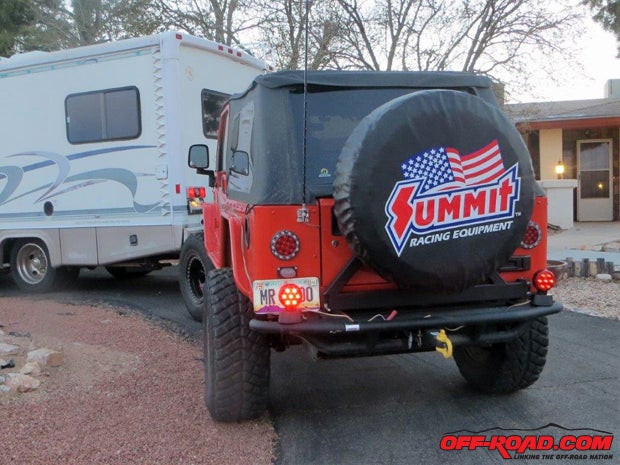
Source:
Summit Racing
http://www.summitracing.com/


 Your Privacy Choices
Your Privacy Choices